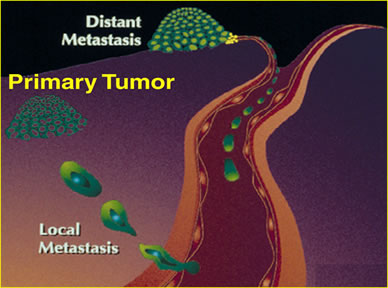
In a Thymic carcinoma, the tumors grow more quickly than thymomas and have a greater propensity for capsular invasion, metastases, and recurrence. They are usually advanced when diagnosed, and are often resistant to chemotherapy. Patients with thymic carcinoma have a worse survival compared with thymoma. The cells that make up the carcinoma no longer look like normal thymus cells, but cancer cells from the pathological standpoint.
Some studies have suggested a possible link with exposure to radiation to the upper chest area, but this has not been confirmed. The only known risk factors, based on case studies, are age and ethnicity.
Thymic Neuroendocrine Tumor (Thymic Carcinoids)
When a pathologist looks at cancer cells, they apply certain stains, or coloring agents, before looking at the cells under a microscope. The way the cells appear when stained tell the pathologist the type of cancer. Thymomas and thymic carcinomas are from epithelial cells that line the surface of the thymus. There are also thymic carcinoid tumors that arise from glandular endocrine-hormone producing cells that are found in small quantities in the thymus. These cells can be found almost anywhere in the body, but is largest amounts in the small intestine. Other places containing endocrine cells include the appendix, rectum, and lung.